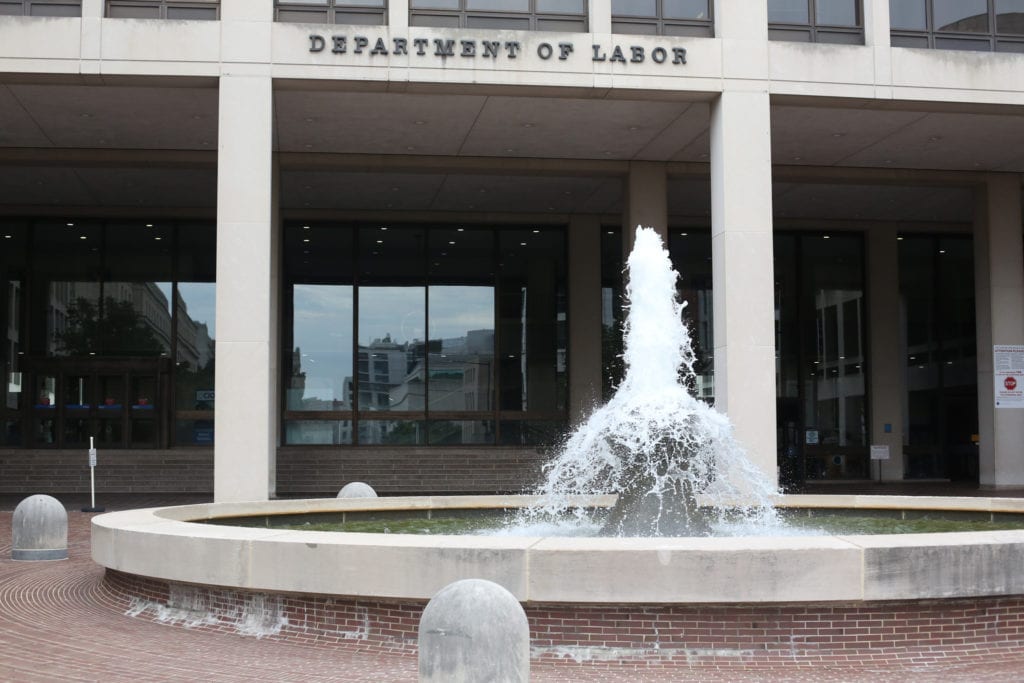
The U.S. Department of Labor proposed barring fiduciaries from investing in funds that prioritize certain values if the potential returns are lower than other funds.
The proposed rule means the people who run private retirement funds may no longer have the option of investing in companies that are considered socially responsible. The term for those mutual funds and stocks is environmental, social and governance funds, or ESG.
The comment period on the proposal closed Thursday.
“Private employer-sponsored retirement plans are not vehicles for furthering social goals or policy objectives that are not in the financial interest of the plan,” Labor Secretary Eugene Scalia said in a June 23 statement, when the department proposed new guidelines.
“Rather, [Employee Retirement Income Security Act of 1974] plans should be managed with unwavering focus on a single, very important social goal: providing for the retirement security of American workers,” Scalia said.
The Employee Retirement Income Security Act of 1974 applies to private-sector companies that provide employees with retirement plans, such as 401(k) or 403(b) plans.
“In a nutshell, the Department of Labor is changing their tune to say, you can include ESG funds, but the No. 1 driver in making decisions on including any investment in a lineup has got to be their performance,” said Gerald Wernette, a principal at Rehmann.
“If an ESG fund is underperforming comparable funds because they’re excluding companies and whatnot in their investment because they don’t fit the ESG criteria, the Department of Labor is now saying, you’re not going to get a free pass on ignoring that performance criteria or that risk criteria just because it’s an ESG fund,” said Wernette, who advises clients on retirement investing and compliance.
Industry experts say the proposal puts an additional burden on fiduciaries to document how the environmental, social and governance-based investments are outperforming other investments.
“In order to prove that you’re investing in it based solely on pecuniary interests, you’d have to show you compared it to other funds that have the same sort of characteristics and show that based purely on historically performance that it was as good or better than the non-ESG funds,” said Mary Alcock, counsel at Clearly Gottlieb Steen & Hamilton LLP.
“One question is, with all of the funds out there, proving that this fund is going to be better than all others similar but non-ESG funds is a little bit daunting,” she said. “But then also having to write it down and potentially be challenged on it by plan participants, adds a layer of work and a layer of risk to the fiduciary.”
The proposed regulation also bucks the trend of younger investors wanting to align investments with their values, experts said.
The biggest investor in environmental, social and governance funds are state government plans, which are not governed under the Employee Retirement Income Security Act of 1974, the experts said. Still, there is a “significant amount” of plan assets at stake, said Candace Quinn, senior counsel at Seyfarth Shaw LLP.
“We are talking about $7 trillion that’s held in defined contribution plans, and $11 trillion is held in pension plans,” she said. “Plan fiduciaries need to proceed with caution while this is being reviewed.”
A group of Senate Democrats in a July 15 letter to the Labor secretary said the proposal “would undermine the ability to consider firms’ records on race and diversity when making investment decisions.”
“ESG investing allows retirement savers to support long-term change by building a system that rewards and values inclusion and diversity in corporate cult from the board to the workforce,” the group of 13 Democrats wrote to Scalia. “By restricting ESG investing, the Department’s proposal would undermine a powerful tool that leverages trillions of dollars a year to drive positive social change.”
(Edited by David Martosko and Allison Elyse Gualtieri.)
The post How new guidelines could affect retirement investing appeared first on Zenger News.






